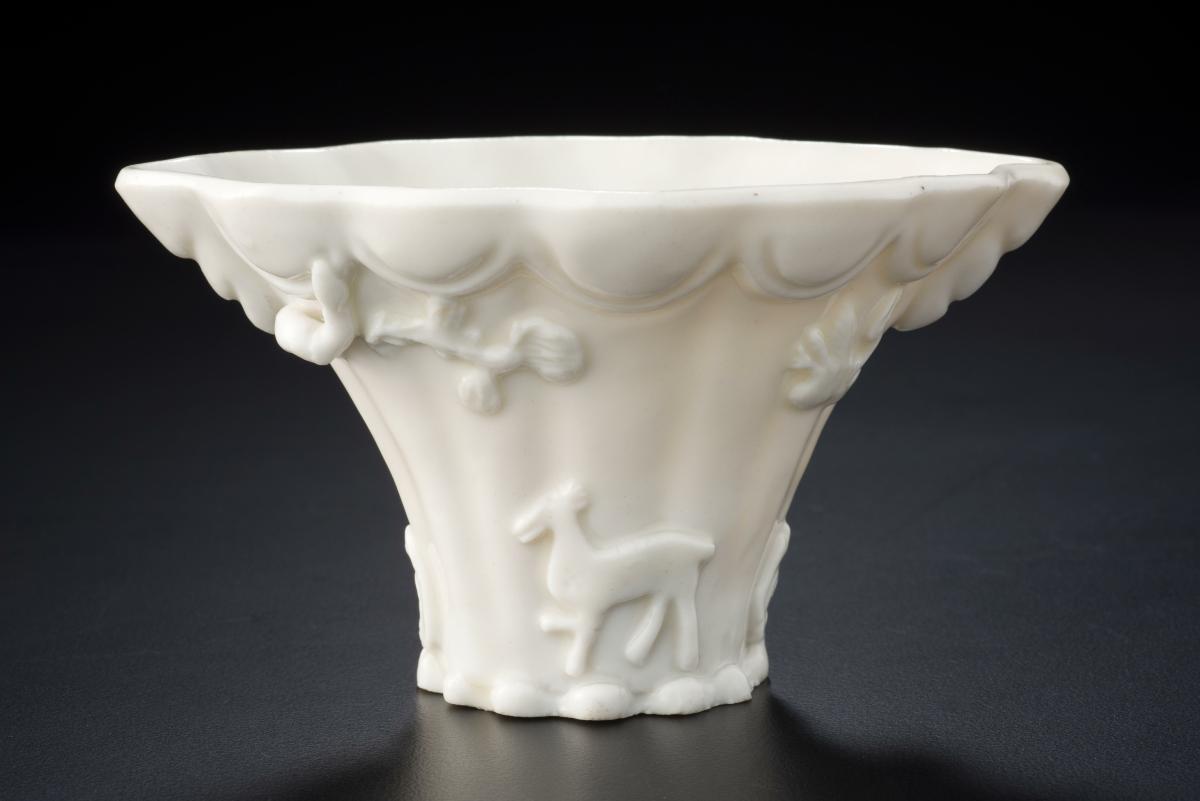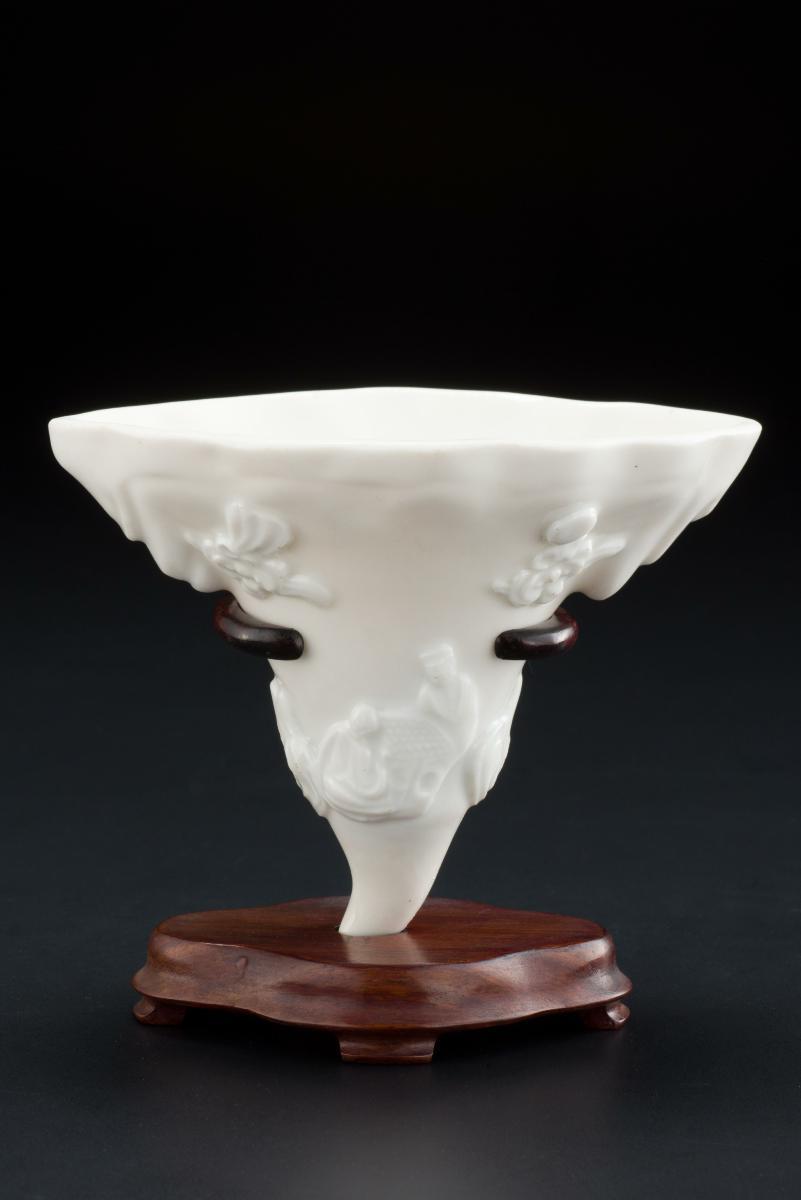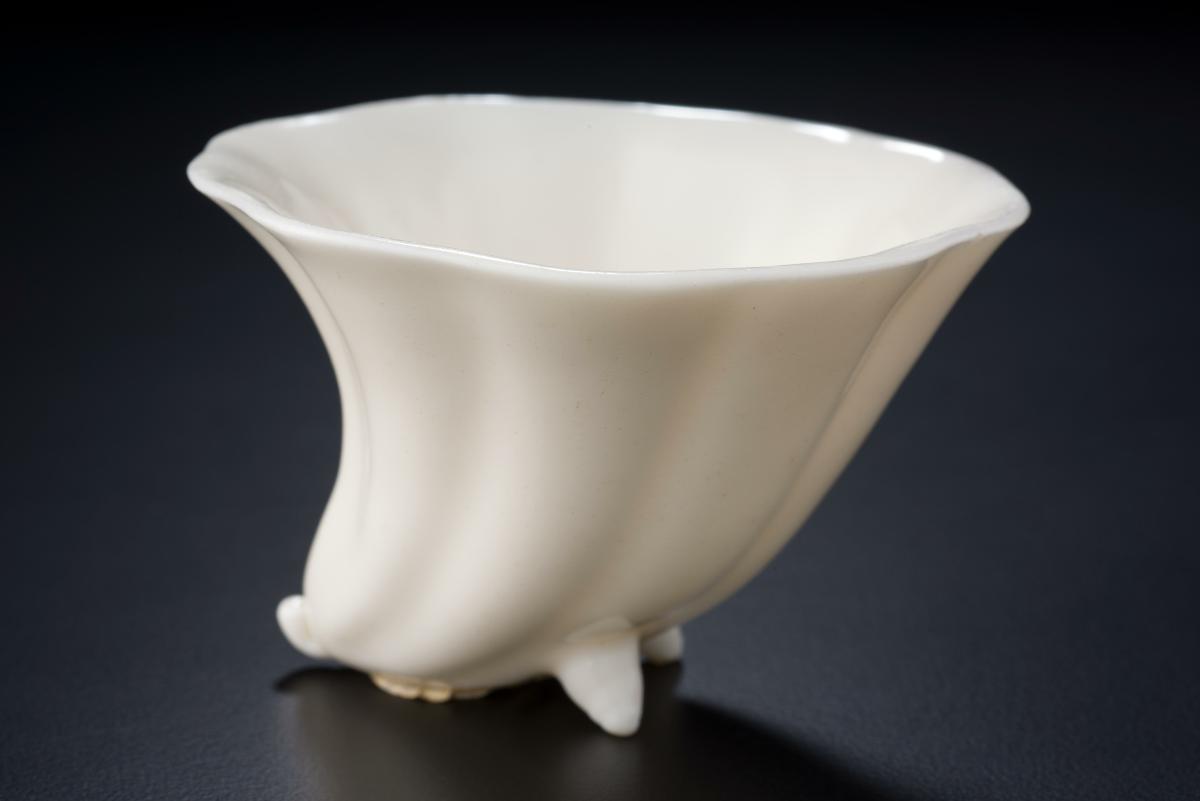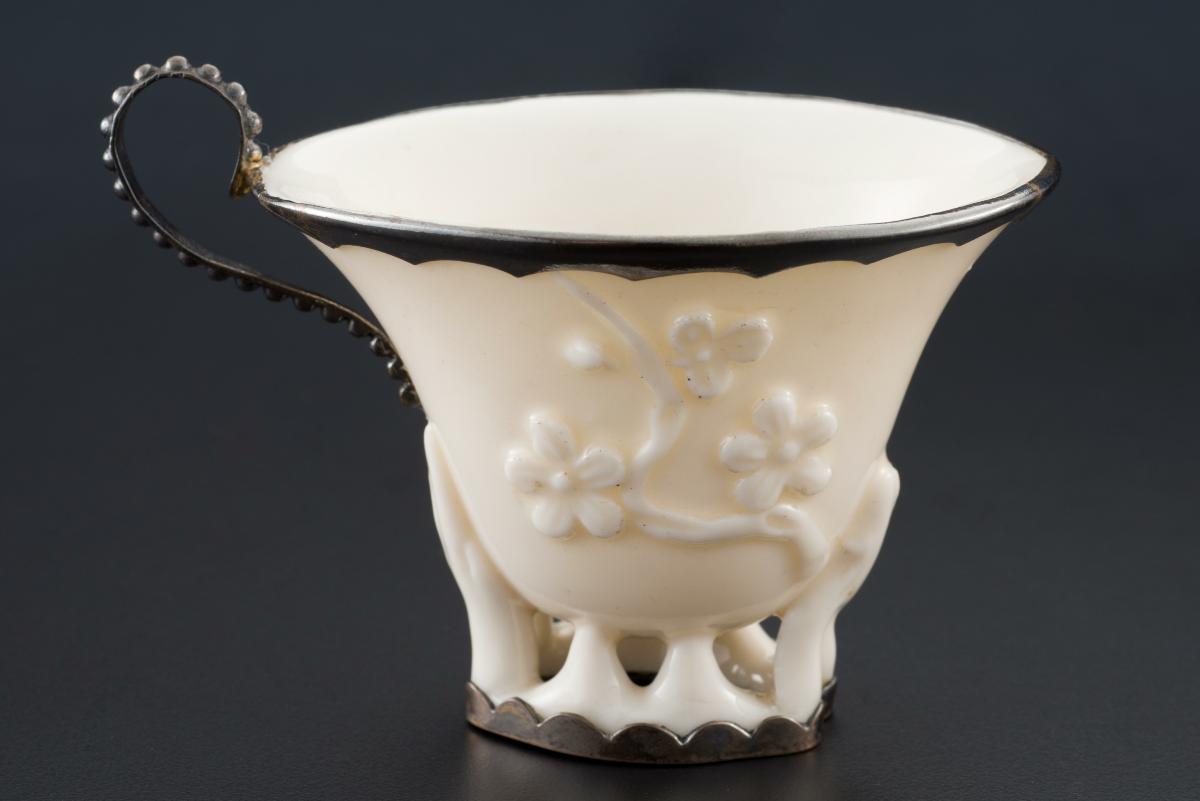The sloppily applied motifs of a crane flying upside down (reverse) and a lion (facing) that appears to be losing its balance suggest hasty production in the face of high demand for these wares. Copies of this form made at provincial kilns in Fujian and at Jingdezhen during the late 18th century suggest that these vessels were in high demand. Cups with the headless dragon appear to have been made in more recent times as well.Similar cups have been found overseas – at Kampong Juara on Tioman Island where trading ships stopped for supplies en route to Batavia and eventually Europe. Dehua, located on the southeast coast of Fujian province, is well known for its production of white porcelain, known to Europeans as 'blanc de Chine'. The earliest Dehua porcelain was produced as early as the 14th century but the production and quality of these porcelain peaked around the 17th and 18th centuries.















